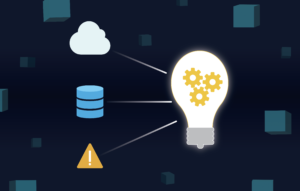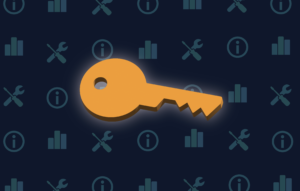Blog Team
Congruity360 Marketing
Data cleaning, also referred to as data cleansing or scrubbing, is a crucial step in the data management process. This process can encompass a wide range of tasks, including dealing with missing values, duplicate data, irrelevant information, and typographical errors. The primary objective of data cleaning is to create reliable datasets that align with the intended purposes of analysis, ensuring that the insights derived from the data are accurate and meaningful. Proper data cleaning can lead to more accurate decision-making, improved operational efficiency, and enhanced data integrity.
Understanding Data Cleaning
To comprehend the concept of data cleaning, it’s important to understand that data, in its raw form, is often messy and unstructured. It’s filled with inaccuracies, inconsistencies, and redundancies that can severely compromise the results of any analysis. Data cleaning is the process of sifting through this raw data, identifying these errors, and rectifying or eliminating them. This vital process ensures that the data is accurate, consistent, and usable for analysis.
Data cleaning is not a one-time task but a continuous process that occurs at various stages of data management. It requires a deep understanding of the data, its sources, and how it’s going to be used in the future. Understanding data cleaning is the first step towards maintaining high-quality data, which is the foundation of any data-driven decision-making process.
The Data Cleaning Process
Understanding the process of data cleaning is crucial to ensuring the quality and reliability of your data. Each step in the data cleaning process is iterative, meaning it may be repeated several times until the data is of the highest possible quality for analysis and decision-making.
Data Auditing
Data auditing is the very first step in the data cleaning process. Raw data is thoroughly examined using statistical methods and database techniques to detect any anomalies, inaccuracies, or inconsistencies.
This step is crucial as it allows data analysts to understand the overall quality of the dataset, identify potential errors, and plan the subsequent cleaning steps accordingly. Techniques such as data profiling are commonly used during data auditing. It can also involve the use of data visualization tools for spotting outliers or irregular patterns. By comprehensively auditing the data, organizations can ensure they are working with the most accurate, reliable, and high-quality data, paving the way for robust data analysis and informed decision-making.
Workflow Specialization
Workflow specialization involves tailoring data cleaning processes to suit the specific requirements of the dataset and the objectives of the data analysis. This could mean implementing particular techniques or tools optimized for certain types of errors or discrepancies.
For instance, a dataset with a significant number of missing values would require a different cleaning approach compared to one with numerous duplicate entries. Thus, workflow specialization enables data professionals to devise and implement the most effective and efficient cleaning strategies possible, enhancing both the speed and quality of the data cleaning process. It ensures that the cleaned data is not only free from errors but is also structured and formatted in a way that facilitates subsequent analysis or processing.
Workflow Execution
Workflow execution is the stage where the data cleaning processes that have been planned and specialized are put into action. It involves implementing the designed strategies to detect and handle inconsistencies, missing values, duplicate entries, and other potential errors in the dataset.
This stage may employ different data cleaning techniques, such as data transformation or data harmonization. Data cleaning tools and software are often utilized to automate and streamline the execution process, enhancing efficiency, accuracy, and speed. It’s crucial to monitor the workflow execution closely to ensure it is operating as intended and to make any necessary adjustments. After the execution, the data must be evaluated to verify the effectiveness of the cleaning process.
Post-Processing & Controlling
Post-processing and controlling is the final stage of the data cleaning process but is no less critical than the preceding steps. In this phase, the cleaned data is thoroughly evaluated to determine the effectiveness of the cleaning process and to identify any residual errors that may have been overlooked.
This step often involves rigorous data validation techniques and the use of statistical analysis to ensure that the data adheres to the expected norms and standards. Additionally, the cleaned data is compared to the original dataset to assess the extent and impact of the changes made during the cleaning process. This comparison provides valuable insights into how the quality and reliability of the data have been improved through cleaning, informing further modifications or improvements to the cleaning procedures.
Post-processing and controlling also include the establishment of preventive measures and controls to maintain the cleanliness and integrity of the data over time. This may involve setting up automated error-detection and correction mechanisms, implementing data quality standards and protocols, and conducting regular data quality audits.
Characteristics of Clean Data
Recognizing clean data involves understanding its key characteristics. These characteristics are:
- Accuracy. The data correctly represents the real-world scenario or entity it is meant to depict. It should be free of errors such as inconsistencies, discrepancies, and inaccuracies that can affect its veracity.
- Completion. Data should have no missing values or gaps that can create a bias in the analysis.
- Consistency. Data should have a uniform format, measurement, and terminology being used across the dataset.
- Relevancy. Data should contain only the information necessary for the specific purpose or analysis at hand, free from irrelevant or redundant entries that could skew the results.
- Timely. The data is up-to-date and provides the most current representation of the situation or subject at hand.
By ensuring these characteristics, organizations can maximize the value of their data, enabling reliable, robust, and meaningful analysis that drives effective decision-making.
How to Validate Your Data is Clean?
Validating the cleanliness of your data involves several steps and practices. The first step is visual inspection, where you manually review a portion of your dataset to spot any glaring errors or inconsistencies. Though this method is not thorough, it can give you an initial sense of the data’s quality.
The second step is descriptive statistics. This involves calculating measures like means, medians, modes, ranges, and standard deviations for your data. These statistics can reveal outliers or unusual distributions that might indicate data problems.
The next step is data profiling. This involves using specialized software or scripts to automatically assess the quality of your data, checking for things like missing values, duplicate entries, and inconsistent formats. This step can also include checking the metadata associated with your data to ensure it is complete and accurate.
The fourth step is data quality reports. These are detailed reports generated by data cleaning tools that provide insights into the quality of your dataset before and after the cleaning process. They can highlight the effectiveness of your cleaning efforts and pinpoint areas that might still need attention.
Finally, validation rules can be set up to automatically flag any data that doesn’t meet your quality standards. These rules can check for things like logical consistency, adherence to formats, and relationship constraints.
It’s important to remember that data validation should be an iterative process. As new data enters the system, or as your analytical needs change, you may need to adjust your validation criteria and processes accordingly. Ensuring your data is clean is an ongoing effort that yields significant benefits in the form of reliable, accurate insights, and informed decision-making.
Challenges of Data Cleaning
Despite the critical importance of data cleaning, it is not without its challenges. One of the significant challenges involves the sheer volume of data that businesses manage today. The increasing magnitude of data leads to a corresponding increase in the complexity of the cleaning process.
Data privacy is yet another challenge. Depending on the nature of the data and the jurisdiction, there are often stringent legal and ethical requirements regarding how data can be accessed, processed, and stored which adds complexity to the data cleaning process.
Detecting and handling errors can also be challenging, particularly if they are subtle or non-obvious. Errors might include inconsistencies in naming conventions, data entry errors, or problems resulting from system glitches.
Despite these challenges, the benefits of clean data significantly outweigh the effort required, and the use of advanced data-cleaning tools and techniques can help mitigate some of these challenges. By understanding and addressing these challenges, businesses can more effectively clean their data, leading to more accurate, reliable, and valuable insights.
Manage Your Data with Congruity360
As businesses grapple with the challenges of data cleaning, it becomes crucial to leverage advanced tools and services like Congruity360. Congruity360 is a comprehensive platform that aids in improving the quality and reliability of your data.
Whether you’re dealing with subtle errors or grappling with maintaining data quality over time, Congruity360 is equipped to manage these challenges effectively. By leveraging Congruity360, businesses can not only ensure the cleanliness of their data but also extract meaningful, reliable insights that drive informed decision-making and enhance business performance.









